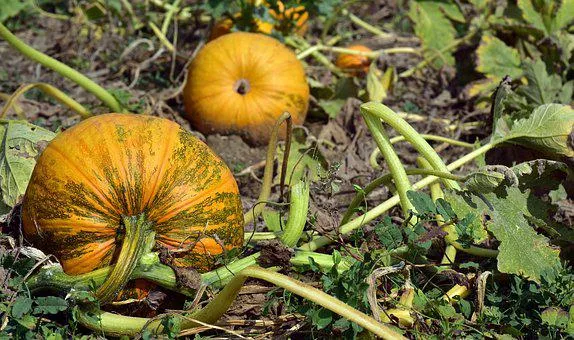Let Us Do Cultivate Pumpkin in Our Home Garden

Let Us Do Cultivate Pumpkin in Our Home Garden
Pumpkin (Cucurbita maxima) is belongs to the family Cucurbitaceae. It is a very popular vegetable in Sri Lankan household and it is very tasty in many methods of preparing the delicious culinary dishes. Pumpkin is an incredibly nutritious food. Its’ nutrient dense, meaning it has lots of vitamins and minerals and relatively few calories. The vitamin A contained in pumpkin is actually in the form of vitamin A precursor’s beta carotene and alpha carotene. Your body can turn these powerful antioxidants into vitamin A after you consume them. Vitamin A helps to safeguard the immunity, eye heath, skin health, metabolic heath and for the proper blood circulation through the heart. Pumpkin seeds are low in carbs but high in fat, making them an ideal snack for people who follow low carb or plant-based diets. If we can cultivate pumpkin in our home gardens it is a very good opportunity for an easy gain in fresh vitamins and minerals through this nutrient rich vegetable.
How can we start and where to start?
Pick a good spot in full sun with space for sprawling vines to run or if space is limited, plant can use as a vine to a pole where it can reach to your roof easily. But here you have to be safe with the direct sunlight on the emerging young pods. If the sun shines harshly, more sun burns and transpiration will cause the dehydrated or small fruits in the end. The best is to use a good place on the soil where the vine can grow easily on the ground.
The varieties in Sri Lanka
The Department of Agriculture has released two varieties and they are “Pathma” and “ANK”. They also recommended cultivating the local strains and butternut in Sri Lankan soil too. The best quality cultivation is founded by the good quality seed planting therefore you can buy seeds from the recommended varieties from a local shop. Even though you can use the good mature seeds from the pumpkin where you had bought from the vegetable stall which is usually a kitchen waste.
Climatic features that suitable for the pumpkin
Pumpkins can grow to an elevation of 500 m in the dry and intermediate zones commercially. Although it can grow in wet zone areas too as a home garden crop. Soil should be rich in humus with a pH range of 5.5 – 7.5. Sandy loam is a very good soil type for cultivation.
Bed or Pot Preparation
Whether you choose to plant in the ground or in raised beds or containers, soil is the key to success. The majority of edible plants grow best in loamy soils, a mixture of clay, sand, silt, and organic matter. The best media for any crop is loose loamy soil with good drainage capacity. If your home garden is in low country wet zone it is highly recommended to prepare raised beds for planting. The pot or container cultivation is applicable with more urban areas. For the raised beds, the recommended width of the plot is 90cm and the length can be vary according to your own preference and according to the available land that you have. The raised bed should be in height of 20-30cm. the bed areas should tilt finely and can add the growing medium as Compost/ leafy mould: sand: cow dung into 2: 1: ½ . Make planting holes in the spacing of 1m x 1m. Dibble 2 seeds per one planting hole (10 cm between seeds) and cover them by using a small layer of growing medium. And irrigate just after the planting.
If you are using pots or containers or empty poky sack bags, the above same medium can be filled into 25cm pots and plant two seeds per one pot in 10cm between the seeds. Also to avoid adverse effects of unfavorable weather conditions seedlings can also be raised in polythene bags or Noridoko nurseries before the direct seeding them in the beds or pots.
Fertilizing
After the seedlings emerge it is better to use a mulch to cover them and harden them from adverse climatic conditions until they are steady. We can use the paddy straw as a mulch. The first top dressing we can use is cow dung application with rich compost in 1 ½ weeks after the planting. Then the second, third and fourth top dressings will be in 3, 5 and 7 ½ weeks after planting. In the second top dressing it should apply some phosphorus rich fertilizer for the growth of roots. We can use fertilizers like poultry litter as a prosperous rich fertilizer.
Irrigation
Irrigate daily until germination is complete and every 7 days thereafter. Also need to practice the irrigation until beds come to field capacity, taking care not to submerge vines.
Weeding should be practiced when necessary. Manual weeding is applicable.
Harvesting can be practiced 40-60days after flowering and when the fruit develops a powdery film in its fruit coat. Pumpkins can be stored for 6 – 8 months and the butternut variety can be kept for about 1 month under ambient conditions.
If you can grow your own pumpkin in your home garden, the benefits will be more because it is organic and cultivated by you according to your methods which is eco-friendly. So it is safe to the environment and to the whole family too.